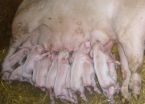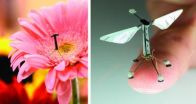(Press-News.org) Wildfires and flooding affect many more people in the USA than earthquakes and landslide and yet the dread, the perceived risk, of the latter two is much greater than for those hazards that are more frequent and cause greater loss of life. Research published in the International Journal of Risk Assessment and Management, suggests that a new paradigm for risk assessment is needed so that mitigation plans in the face of natural disasters can be framed appropriately by policy makers and those in the emergency services.
Maura Knutson (nee Hurley) and Ross Corotis of the University of Colorado, Boulder, explain that earlier efforts for incorporating a sociological perspective and human risk perception into hazard-mitigation plans, commonly used equivalent dollar losses from natural hazard events as the statistic by which to make decisions. Unfortunately, this fails to take into consideration how people view natural hazards, the team reports. Moreover, this can lead to a lack of public support and compliance with emergency plans when disaster strikes and lead to worse outcomes in all senses.
The researchers have therefore developed a framework that combines the usual factors for risk assessment, injuries, deaths and economic and collateral loss with the human perception of the risks associated with natural disasters. The framework includes risk perception by graphing natural hazards against "dread" and "familiarity". These two variables are well known to social psychologists as explaining the greatest variability in an individual's perception of risk, whether considering earthquakes, landslides, wildfires, storms, tornadoes, hurricanes, flooding, avalanche, even volcanic activity. "Understanding how the public perceives the risk for various natural hazards can assist decision makers in developing and communicating policy decisions," the team says.
The higher the perceived risk of a natural disaster, the more people want to see that risk reduced and that means seeing their tax dollars spent on mitigation and preparation. For example, far more money is spent on reducing earthquake risk than on reducing the risk from wildfires, perhaps because the perceived risk is much greater, even though both will cause significant losses of life and property. The team's new framework for risk assessment will act as an aid in decision making for these types of situations as well as perhaps even offering a way to give members of the public a clearer understanding of actual risk rather than perceived risk.
INFORMATION:
Hurley, M.A. and Corotis, R.B. (2014) 'Perception of risk of natural hazards: a hazard mitigation plan framework', Int. J. Risk Assessment and Management, Vol. 17, No. 3, pp.188–211. END
Risk is much more than a game
2014-05-23
ELSE PRESS RELEASES FROM THIS DATE:
The protective milk shot
2014-05-23
Antibodies against C. suis are transferred via the sow's very first milk to the piglets immediately after birth. This was discovered by veterinarian and parasitologist Lukas Schwarz and his colleagues in 2013. These findings prompted the researchers at the Institute for Parasitology to look for a way to increase the level of these antibodies in sows. The ultimate goal was to provide the piglets with as much antibodies as possible via their mother's milk during the first few days of life.
Piglets from infected mothers are healthier
The idea paid off. Piglets from infected ...
Nature inspires drones of the future
2014-05-23
Researchers have been taking tips from nature to build the next generation of flying robots.
Based on the mechanisms adopted by birds, bats, insects and snakes, 14 distinguished research teams have developed solutions to some of the common problems that drones could be faced with when navigating through an urban environment and performing novel tasks for the benefit of society.
Whether this is avoiding obstacles, picking up and delivering items or improving the take-off and landing on tricky surfaces, it is hoped the solutions can lead to the deployment of drones in ...
Rapid evolution aids spread of exotic plant species
2014-05-23
A team of Belgian biologists led by researchers at KU Leuven has provided the first genetic evidence that rapid evolution can help non-native plant species spread in new environments. Using samples of centuries-old herbaria and DNA analysis, the researchers reconstructed the genetic adaptations undergone by the Pyrenean rocket prior to its rapid spread in Belgium.
The Pyrenean rocket (Sisymbrium austriacum subsp. chrysanthum) is a plant that grows in the mountains of southern Europe and is particularly prevalent in the Pyrenees. The species was first reported in Belgium ...
Lack of plant diversity spurs cankerworm damage in cities
2014-05-23
Research from North Carolina State University finds that a lack of plant diversity is a key contributor to the widespread defoliation caused by cankerworms in cities, and highlights the role that increasing diversity can play in limiting future damage.
Fall cankerworms (Alsophila pometaria) are caterpillars that are native to the eastern United States and hatch in early spring. The cankerworms defoliate trees and other plants, eating new leaves as they emerge – which is both unsightly and can ultimately kill the plants.
"We see cankerworms doing more damage to trees ...
Flatland optics with graphene
2014-05-23
Researchers from CIC nanoGUNE, in collaboration with ICFO and Graphenea, introduce a platform technology based on optical antennas for trapping and controlling light with the one-atom-thick material graphene. The experiments show that the dramatically squeezed graphene-guided light can be focused and bent, following the fundamental principles of conventional optics. The work, published yesterday in Science, opens new opportunities for smaller and faster photonic devices and circuits.
Optical circuits and devices could make signal processing and computing much faster. ...
Bacterial adaptation contributes to pneumococcal threat in sickle cell disease patients
2014-05-23
Researchers have identified differences in the genetic code of pneumococcal bacteria that may explain why it poses such a risk to children with sickle cell disease and why current vaccines don't provide better protection against the infection. St. Jude Children's Research Hospital scientists led the study, which appeared earlier this month in the journal Cell Host & Microbe.
The findings will aid efforts to improve vaccine effectiveness and inform research into new ways to protect young sickle cell disease patients from life-threatening pneumococcal infections that can ...
Breakthrough in RSV research to help infected children
2014-05-23
Researchers at Le Bonheur Children's Hospital and the University of Tennessee Health Science Center announced results today from a clinical trial of a drug shown to safely reduce the viral load and clinical illness of healthy adult volunteers intranasally infected with respiratory syncytial virus (RSV).
Detailed results of this study were presented by lead researcher Infectious Disease Specialist John DeVincenzo, MD, this week during a poster discussion session at the American Thoracic Society 2014 International Conference in San Diego. He serves as medical director of ...
Argonne scientists discover new phase in iron-based superconductors
2014-05-23
Scientists at the U.S. Department of Energy's Argonne National Laboratory have discovered a previously unknown phase in a class of superconductors called iron arsenides. This sheds light on a debate over the interactions between atoms and electrons that are responsible for their unusual superconductivity.
"This new magnetic phase, which has never been observed before, could have significant implications for our understanding of unconventional superconductivity," said Ray Osborn, an Argonne physicist and coauthor on the paper.
Scientists and engineers are fascinated ...
Health-care professionals must be aware of rarer causes of headaches in pregnancy
2014-05-23
Most headaches in pregnancy and the postnatal period are benign, but healthcare professionals must be alert to the rarer and more severe causes of headaches, suggests a new review published today (23 May) in The Obstetrician & Gynaecologist (TOG).
The review looks at common causes for headaches during pregnancy and the postnatal period, possible conditions that may be associated with headaches and how healthcare professionals should manage the care of the woman appropriately.
There are 85 different types of headache. Approximately 90% of headaches in pregnancy are migraine ...
A study assesses the possibility of turning CO2 into methanol for use in transport
2014-05-23
Tecnalia has collaborated in a study for the European Parliament's Science and Technology Options Assessment Panel (STOA) on the future use of methanol, produced from carbon dioxide, in motorised transport. STOA is the panel that advises MEPs in the sphere of Science and Technology.
The study analysed the barriers –technological, environmental and economic– to producing methanol using carbon dioxide as well as the options that would allow possible uses in automobile transport in the medium and long term.
The costs and benefits were evaluated from the life cycle perspective ...




